 |
|
| Cases on a 40' flatrack on an Lgjs container car |
The end of the flatrack shows signs of rough treatment (1) - perhaps, in contravention of the rules, a forklift truck was used for switching. The case (2) is unfavorably positioned. All the cases are secured with tie-down lashings.
In the pictures, all the cases have been shifted somewhat to the other side, which would have made it possible to use stanchions on the flatrack.
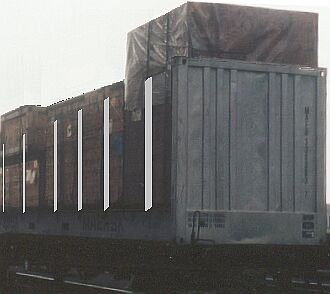 |
|
| The use of stanchions would have improved cargo securing. |
Other cargo securing options would also have been feasible:
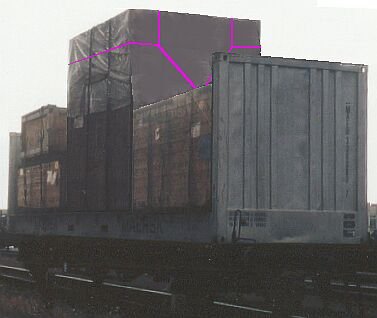 |
|
| Restowed case with additional direct spring lashings |
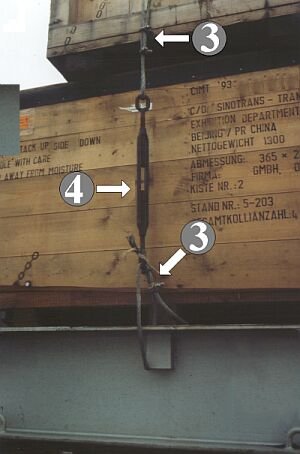 |
|
| Nonuniform securing wastes materials |
Tie-down lashing made from 16 mm diameter steel wire rope, together with two wire clips (3) and sharp edges, does not come anywhere near to achieving the maximum securing load of the turnbuckle (4) used. For cost reasons, uniform securing is essential.
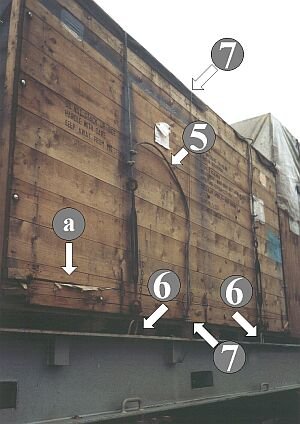 |
|
| Nonuniform securing wastes materials |
Even at the port of departure, the first packaging deficiencies are visible at (a) - the statement made above about using two wire clips, the turnbuckles and nonuniformity applies. The wire rope end (5) which is hanging loose constitutes both a waste of materials and an accident risk. With a maximum securing load of 3,000 daN, the lashing points at (6) ought to be fully utilized, and, if the thin wire (7) had been used correctly and sensibly, uniform securing could have been produced. However, here the wire was passed round sharp edges and fastened with one wire clip.
 |
|
| Unbraced gaps in the load are a securing risk. |
The cargo has been loaded in such a way that the overheight case can be positioned so that it is held precisely centrally by a stanchion. The long case rests against the right-hand end wall, the mid-length one against the left-hand end wall. The smallest case is positioned on the mid-length one, but is packed flush with the inner end wall thereof.
 |
|
| Securing a number of cases on a 40' flatrack |
 |
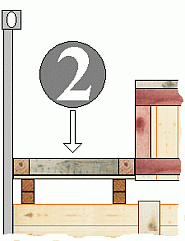 |
 |
|
| Details of gap bracing | |||
The smaller gaps between stanchions and the outsides of cases are filled with boards (1). The gaps between the overheight case and the adjacent cases are braced by means of a structure consisting of wooden lattices, i.e. boards nailed together vertically and transversely, and squared lumber ends (3). The gap between the end wall and the small case packed on the top contains squared lumber bracing (2). Since the end walls and stanchions provide a tight fit in the horizontal directions, supplementary securing comprising two steel strapping tie-down lashings (4) per case or case stack can now readily be provided. Segments of automobile tires are used as edge protectors.
Leaving gaps at the end walls would not save any labor or material. The advantage of the load distribution chosen is that the overheight case could be readily provided with additional securing means if the individual stanchion proved insufficient. Lateral securing with direct lashings would then be feasible, together with spring lashings.